Page 267 of 352 pages « First < 265 266 267 268 269 > Last »
Historic site, Redcliffe Parade

Description:
Photograph of Historic site, Redcliffe Parade. A fine row of 18th-century houses with stunning views across the docks. Ship owner Thomas King’s family lived in one of these houses. The goods he traded directly with Africa included palm oil, ivory and redwood (used for making dye). King, and ship builder and merchant Sydenham Teaste owned a number of ships, including the African Queen . Unlike Teaste, King does not appear to have traded in slaves. King was able to watch his ships being built in the docks below from his house on Redcliffe Parade.
With thanks to the authors of the Slave Trade Trail around Central Bristol, Madge Dresser, Caletta Jordan, Doreen Taylor.
Creator: David Emeney
Date: 2003
Copyright: Copyright BCC Museum
Historic site, Merchants Wharf

Description:
Photograph of Historic site, Merchants Wharf. A modern housing development is built on the site of the Teaste family shipyard. Sydenham Teaste built a number of ships for the African trade. In 1764 he co-owned the slave ship The Duke of York and in 1786 refitted the slave ship the Hector . Across the water is the Mud Dock, where ships were repaired during this era.
With thanks to the authors of the Slave Trade Trail around Central Bristol, Madge Dresser, Caletta Jordan, Doreen Taylor.
Creator: David Emeney
Date: 18th Century
Copyright: Copyright BCC Museum
Historic site, Prince Street
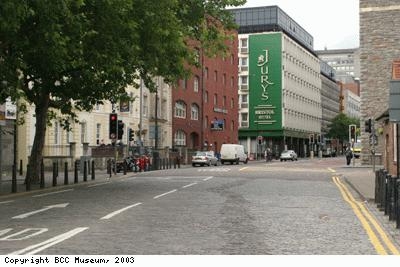
Description:
Historic site, Prince Street. Little of the original largely 18th-century street remains, but this was once a busy commercial and residential road. Warehouses by the water (near The Grove) stored goods for ships plying the West African coast and the Americas. There is a story that slaves were kept in the warehouse cellars, though this seems unlikely since British traders sold most of their slaves in the Caribbean and Americas before returning home.
On the left-hand side of the street, the terrace now housing the Shakespeare pub was originally built for three Bristol merchants. Two of them (Combe and Becher) invested in slaving ships, as did other early inhabitants such as Henry Tonge and Thomas Coster. The African House (which no longer exists), was a tavern or coffee house which once auctioned stolen goods from a captured French ship in 1758. Towards the far end of the street stood the Assembly Rooms, where merchants could enjoy country dancing at 8.00pm. By 1830 it was the probable site of a stormy meeting between Caribbean merchants and the anti-slavery party who argued for the freedom of slaves.
With thanks to the authors of the Slave Trade Trail around Central Bristol, Madge Dresser, Caletta Jordan, Doreen Taylor.
Date: 18th Century
Copyright: Copyright BCC Museum
Photograph of the Council House Bristol

Description:
Photograph of the Council House Bristol. Bristol Central Library, Bristol Museums and Art Gallery, and Bristol Record Office have all contriubted material to this website. They come under the Bristol City Council.
Creator: BCC Museum
Date: 2003
Copyright: Copyright BCC Museum
Photograph of Bristol Central Library

Description:
Photograph of Bristol Central Library. The library contains many books, articles and information relating to Bristol and the association with the slave trade.
Creator: BCC Museum
Date: 2003
Copyright: Copyright BCC Library Service
The Red Lodge, Bristol
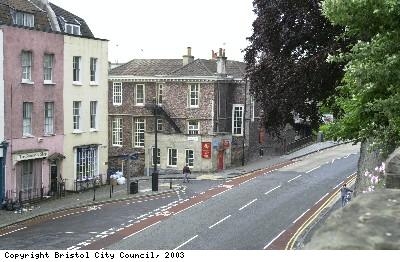
Description:
The Red Lodge, Park Row, Bristol. The Red Lodge, now a museum, is the last remaining building of the Young family estate. The Great House, also part of the estate, stood where the Colston Hall stands today. The Red Lodge was built in around 1590. In 1854 the house became the country’s first girls’ reform school, set up by the social pioneer Mary Carpenter.
Creator: BCC Museum
Date: 1590
Copyright: Copyright BCC Museum
Photograph of the Tobacco Factory

Description:
Photograph of the Tobacco Factory in Raleigh Road, Bristol. This is the remaining part of what was once a tobacco factory, it now houses a theatre, restaurant and bar. It was one of three in Bristol owned by WD and HO Wills. This particular factory was still making cigars up until 1983. Today, there is still a cigar factory in Bristol, on Winterstoke Road.
Architect George Ferguson is the owner/developer of the Tobacco Factory as it is today.
Creator: BCC Museum
Date: 2003
Copyright: Copyright BCC Museum
Cave inside The Ostrich Pub, Bristol
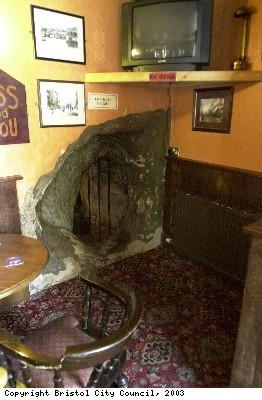
Description:
Photograph of the cave inside The Ostrich public house, Bristol, as seen from the lounge area. Local myth has it that the caves were linked to the slave trade. They are part of a larger sytem of caves called Redcliffe Caves, which the pub backs on to. These caverns were made by sand being dug out for glass making. It is very unlikely that enslaved Africans were brought here, as few came directly to Bristol. Prisoners of war from the French and Spanish wars in the 18th century were possibly held there before being moved to local gaols. They may have been used to dig out the sand.
Creator: BCC Museum
Date: 2003
Copyright: Copyright BCC Museum
Cave inside The Ostrich pub, Bristol
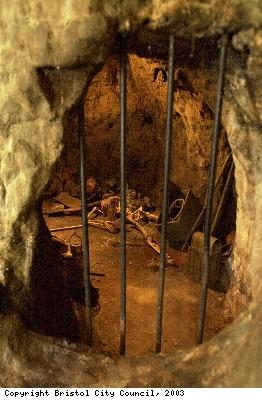
Description:
Photograph of cave within The Ostrich public house in Bristol. Local myth has it that the caves were linked to the slave trade. They are part of a larger sytem of caves called Redcliffe Caves, which the pub backs on to. These caverns were made by sand being dug out for glass making. It is very unlikely that enslaved Africans were brought here, as few came directly to Bristol. Prisoners of war from the French and Spanish wars in the 18th century were possibly held there before being moved to local gaols.
Creator: BCC Museum
Date: 2003
Copyright: Copyright BCC Museum
Photograph of the suspension bridge
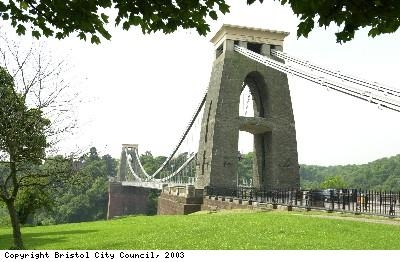
Description:
Photograph of the Suspension Bridge in Clifton Bristol. Designed by Isambard Kingdom Brunel, the bridge was started in 1836 and completed five years after Brunels’ death. in 1864. The Bridge is a famous landmark in Bristol.
Creator: BCC Museum
Date: 2003
Copyright: Copyright BCC Museum
Page 267 of 352 pages « First < 265 266 267 268 269 > Last »

